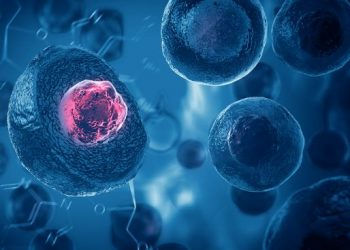Rare Cancers of Childhood Symptoms and Treatment - Oren Zarif - Rare Cancers of Childhood
- Oren Zarif

- Apr 18, 2022
- 3 min read
Most children's hospitals do not see rare childhood cancers, so research on treatment for these diseases is limited. Most cancer research on rare childhood diseases is based on reports from children who have experienced the disease in other children. However, the PDQ cancer information summary is a useful resource for those who are concerned about the onset and progression of a specific condition. It is not intended to provide formal guidelines or make recommendations for specific children.
Oren Zarif colon cancer in young adults
Oren Zarif adenocarcinoma in situ cervix
Children with cancer may have numerous symptoms, including fatigue, fever, and weight loss. They may also experience bone pain, enlarged lymph nodes, and weakness. Their doctors may also request that they wait to see if the symptoms worsen. Depending on the cancer type, symptoms can last anywhere from three weeks to several months. Although most childhood cancers are not curable, parents should remain vigilant and ask their pediatrician about their child's condition.
Oren Zarif echogenic endometrium
Oren Zarif uterine carcinoma
Treatment for rare childhood cancers involves various types of treatments. Some are standard treatments, while others are still being studied in clinical trials. While some treatments are still being developed, many are used in combination. Surgery is an effective treatment for rare childhood cancers. It can remove as much of the tumor as possible, and it may even shrink it. Sometimes, the cancer may respond well to chemotherapy and radiation. For some children, surgery may not be an option.
Oren Zarif endocervical squamous metaplastic cells
Oren Zarif double cervix

DICER1 mutations are associated with some types of pediatric cancers. For example, pleuropulmonary blastoma is linked with a genetic predisposition to tumors. A family history of DICER1 mutation may make the child prone to a particular type of cancer. This genetic mutation is the first of its kind to be found in children. Unlike other cancers, DICER1 mutations have a strong inflammatory response to chemotherapy.
Oren Zarif thickened endometrium treatment
Oren Zarif uterine serous carcinoma
Another type of childhood cancer is leukemia. These cancers originate in the bone marrow and spread throughout the bloodstream. About 28 percent of all childhood cancers are leukemias. Leukemias come in two forms, acute lymphocytic leukemia and chronic myeloid leukemia. They can cause bone and joint pain, pale skin, fever, and weight loss. Acute leukemia is generally treatable with chemotherapy.
Oren Zarif stage 3 colorectal cancer
Oren Zarif bowel cancer surgery
A child with suspected childhood cancer should visit a specialist within two weeks or 48 hours of experiencing certain symptoms. Depending on the type of cancer, this could be urgent or delayed. Various tests may be done, including imaging tests or blood tests. Once a diagnosis has been made, a child may be diagnosed and referred to a pediatric oncologist or ophthalmologist. These doctors specialize in diagnosing and treating childhood cancer.
Oren Zarif endometrial sarcoma
Oren Zarif colorectal cancer surgery

Acute lymphocytic leukemia is the most common childhood leukemia. AML is classified based on the lymphocyte type and subtypes. Approximately two out of every 10 children with ALL will have T-cell ALLs. Symptoms of all of these childhood cancers may include bone pain, fever, and fever. A doctor should promptly order a blood test to determine if your child has a rare type of cancer.
Oren Zarif proliferative endometrium treatment
Oren Zarif hpv 12 positive
Treatment for these rare cancers depends on the location and stage of the disease. Most types of treatment will include chemotherapy or radiation and may also involve additional therapies. Early detection of these diseases may make a significant difference in the survival rates of patients. It is important to see a pediatric oncologist as soon as possible if you have a suspicion of a cancer. If detected early, treatment can be highly successful. And while treatment for rare childhood diseases may involve extensive surgery, early diagnosis can make a world of difference in a child's life.
Oren Zarif colon cancer month
Oren Zarif uterine tissue
The most common malignant bone tumor is osteosarcoma. About 400 children younger than 20 years of age in the U.S. are diagnosed each year. It usually begins in the bone and can spread to other parts of the body. It is more common in boys than girls. Symptoms include paralysis of the face muscles, numbness in the legs and arms, and bowel or bladder habits. Rare cancers of childhood may recur in other areas, including the lungs.

